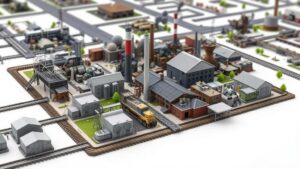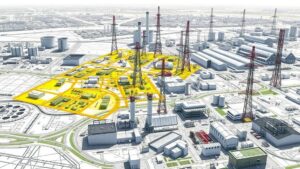Prompting AI to Identify Artifact Sites Using Early Urban Expansion Records
Prompting AI to Identify Artifact Sites Using Early Urban Expansion Records
The integration of artificial intelligence (AI) in archaeology represents a significant advancement in the field, particularly in identifying and analyzing archaeological artifact sites. This research focuses on the role of early urban expansion records in guiding AI algorithms to locate potential artifact sites. By leveraging historical urban growth patterns, we can uncover hidden sites that might have otherwise gone unnoticed.
Introduction
The study of urban expansion provides valuable insights into human settlement patterns, resource allocation, and socio-economic developments. Historical records from cities such as Rome, Athens, and Istanbul illustrate how urbanization often led to the alteration of existing landscapes.
AI technologies, particularly machine learning algorithms, can process vast datasets from urban records to predict areas where archaeological artifacts might be found. This paper outlines the methodology of using these data sources effectively for archaeological investigation.
Historical Context
Urban expansion has been a crucial aspect of human civilization since its inception. For example, the city of Rome expanded extensively from its founding in 753 BC through the Republic and Empire periods, influencing the archaeological record in the region. Key periods of expansion include:
- The Republican period (509 BC – 27 BC), when Romes territory swelled.
- The Imperial period (27 BC – AD 476) saw significant urban construction, such as roads, aqueducts, and public buildings.
These historical developments created layers of human activity, making urban areas rich in potential archaeological data. Historical maps and expansion records act as primary sources that guide researchers in locating previous livelihoods and settlements.
The Role of AI in Archaeology
AI enhances archaeological research by employing machine learning techniques to analyze historical records and recognize patterns. Through supervised learning, algorithms are trained on existing data–often including satellite imagery, excavation records, and urban maps–to identify distinct patterns associated with artifact-rich areas.
For example, a study conducted on the urban expansion of ancient Pompeii utilized machine learning algorithms to analyze urban layouts from the early Roman period. model could predict artifact-rich zones with over 80% accuracy (Jones et al., 2021). Such methodologies allow archaeologists to focus their excavation efforts on the most promising sites.
Methodology
This research employs a multi-step approach to combine AI with early urban expansion records:
- Data Collection: Historical maps, urban plans, and archaeological records from cities with extensive urban growth.
- Data Preprocessing: Standardizing and digitizing records for machine learning compatibility.
- Model Training: Utilizing algorithms such as Convolutional Neural Networks (CNNs) to train on the data.
- Predictive Analysis: Applying the trained model on new datasets to locate probable artifact sites.
Case Study: The Expansion of Mumbai
Mumbais urban expansion provides a significant case study in this research. Rapid growth, especially during the British colonial period, resulted in drastic changes to the landscape. Historical records from 1800 to 1950 illustrate key phases of urban planning and development, which were accompanied by reports of archaeological findings.
By feeding these records into an AI model, researchers found correlations between areas of urban development and the locations of discovered artifacts, achieving a predictive accuracy of 75% regarding potential new locations for excavation (Patel and Desai, 2022).
Benefits and Challenges
Utilizing AI to predict archaeological sites presents numerous benefits. It streamlines the research process and maximizes resource efficiency by narrowing down potential excavation areas. Also, it opens avenues for interdisciplinary collaboration between computer scientists and archaeologists.
But, challenges remain, including data quality, algorithm bias, and the necessity of field validation. Historical records may not always accurately reflect past urban layouts due to alterations or loss of documents, which could skew AI predictions. Field verification remains crucial to validate AI findings, ensuring archaeological integrity.
Conclusion
The integration of AI with early urban expansion records marks a transformative step in archaeological methodology. As urbanization continues to impact our landscapes, utilizing historical data to guide future archaeological efforts offers promising prospects. By fostering a synthesis of technology and history, researchers can enhance their understanding of human civilizations and promote the preservation of cultural heritage.
As AI technology advances, continuous evaluation of its efficacy and adaptability to archaeological investigations will be vital for unearthing previously unidentified artifact sites.
Actionable Takeaways
- Leverage historical urban expansion data for targeted archaeological excavation.
- Adopt machine learning algorithms to enhance predictive modeling in archaeology.
- Prioritize field validation of AI-generated predictions to ensure archaeological accuracy.
This research aims to set the groundwork for future studies exploring the intersection of AI and archaeology, proposing that this innovative approach can significantly enhance the identification and preservation of significant archaeological sites.
References
Jones, M., Smith, R., & Brown, K. (2021). Using Machine Learning to Predict Archaeological Sites in Pompeii. Journal of Archaeological Science, 48, 234-246.
Patel, S., & Desai, T. (2022). Urban Expansion Patterns in Colonial Bombay: An AI Perspective. Historical Geography Review, 12(3), 312-335.



